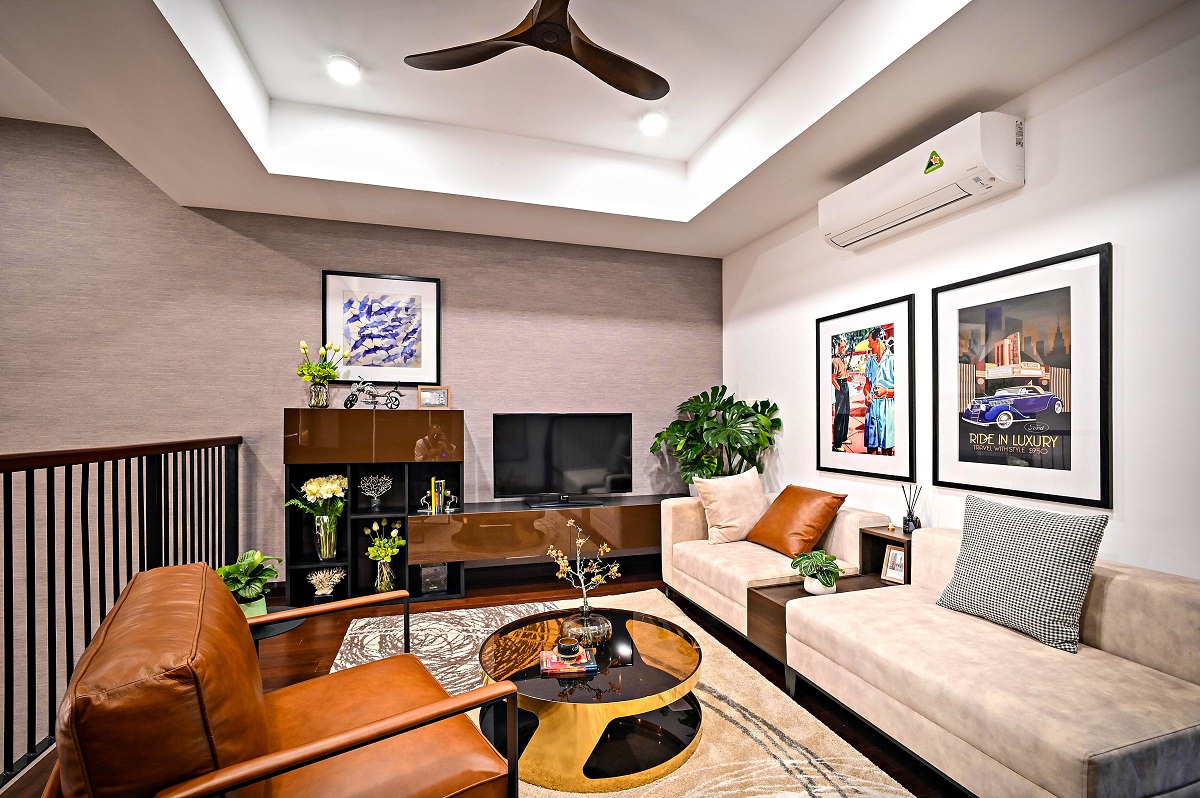By Janet Armstrong, Accredited Interior Decorator, CAPS Certified
Your Interior Design Challenges Solved

As much as you love your home, are there areas or aspects that are less than ideal? We all have a feature or two that is dated, doesn’t make sense or just doesn’t flow with the rest of home. While it may be tempting to carry out a major reno, there are a number of options to downplay or camouflage those less than ideal features in your spaces.
Feature Walls: Highlight or Disguise
Feature walls are typically used in one of two situations: to highlight or downplay. If you have a particular architectural feature or a line of site you would like to highlight, a feature wall is an ideal approach to create a focal point. Conversely, if there is something not particularly attractive in a space that you do not want to draw attention to, such as an awkward corner or unattractive view you can downplay it.
Colour is one of the easiest and most economical solutions for either situation. Dark or richer colours will draw the feature forward so the eye naturally moves to that which you want to highlight. In this instance only the feature wall should be painted the darker tone and the other walls a lighter coordinating colour.
Lighter colours recede, so if you want to make a feature less obvious, paint all walls the same lighter colour. This will bring cohesiveness and flow to the space while downplaying the feature you are trying to minimize. Consider hanging artwork or placing a striking piece of furniture on another wall to draw the eye. The awkward feature will be further minimized.

Rescue Awkward Spaces
An awkward room can be a challenge to decorate, whether it’s small, has mismatched windows, high or low ceilings, irregular shape or difficult proportions. Paint to the rescue again! Because darker and/or warmer colours make a surface appear to come forward, paint is a magician for making a low ceiling appear higher, a high ceiling feel lower, a narrow room feel wider and a long room feel shorter.
‘Raise’ low ceilings by painting them a lighter colour than the walls. I prefer a bright white ceiling to lift a room and make the entire space feel more expansive than it is, but you could use a lighter shade of the wall colour. Another tip for low ceilings: use a semi-gloss or glossy finish to reflect light and make them visually higher.
Many people wish for high ceilings, but they can be as much of a design challenge as low ceilings. High ceilings can make a room feel austere and cold. You can bring warmth to a space and ‘lower’ the ceiling by painting it a shade or two darker than the walls.
Narrow rooms are a challenge from a layout perspective, but also difficult to make comfortable. Painting the side walls a lighter colour and the end wall a darker shade to pull it forward will make the room feel shorter and wider. This is also an opportunity to add a splash of colour that can be repeated in accessories and textiles that draw the eye and create movement in the space.
If your room is short, painting the far wall and ceiling the same colour will give the illusion of a longer, more spacious room. The eye will also be drawn to the far wall and perceive more depth in the space. Adding white wainscotting along the side and across the end walls will enhance the illusion of a deeper space.

Small Space
The rule of thumb has been to paint small spaces lighter hues to make them look and feel bigger. However, rich hues add depth to a small space making it actually appear larger. The secret is to ensure you paint all walls the same colour and have a monochromatic colour scheme, adding in decor accessories and linens in the same colour family as the walls. To bring a sense of spaciousness, minimize the number of decor accessories and patterns in the space.
Large Space
While many of us yearn for larger spaces, they can be just as challenging to decorate as a small space. The upside of a large space is that any colour can be used. However, ensure the shade of colour you select has a warm undertone to make the room feel comfortable and cozy. Of course, adding in heavy textured textiles such as velvet, faux fur or brocade will add additional depth and richness to the space.
These ideas can easily camouflage less-than-ideal aspects of your home, be it an awkward corner or angle, rough walls or a room that is difficult to decorate due to its size. And where better to find inspiration than the colour-of-the-year palettes issued by paint companies that include a range of lighter to more saturated shades? Enjoy planning how you will address the challenge to keep your rooms stylish and fresh.
Janet Armstrong (www.simplyswankdecor.ca) is a graduate of the Interior Design Institute of Canada, CAPS (Certified Aging in Place Specialist) and past chair of the Decorators and Designers Association of Canada (DDA Canada).






